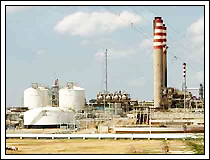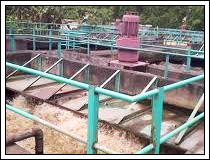| Home > Water Treatment in Underdeveloped Regions |
Water Treatment in Underdeveloped Regions
Water treatment is a pressing affair in decentralized, poor, and underdeveloped regions. Conventional water treatment systems, whether coagulation, flocculation, or filtration, often call for a significant capital investment and installation of complex water management infrastructure. Thus, in poor regions, where utilization of such expensive water treatment systems, technologies and methods practically remains impossible, use of simpler and more cost effective water treatment techniques is the most viable alternative.

Following treatment and management processes are predominantly used for water purification in underdeveloped regions:
Cloth Filtration
For economically challenged people/regions with limited options, cloth filtration is one easy way of purifying water of its of various suspended contaminants. This simple and cost effective method of water treatment can greatly reduce pathogen count in water. The method is extremely elementary. Here, a piece of cloth, preferably cotton, is folded into four or eight layers and is then secured tightly over a wide-mouthed container on which the water collects. Generally, a used piece of cloth is employed for filtration as repeated washing reduces the space between the fibers, making the overall process more effective.
POU Treatment
POU Treatment or Point-of-Use water treatment does not refer to a single water treatment method, but a large variety of water treatment or water quality correction methods that are used to improve or alter the quality of drinking or cooking water. Such water treatment strategies are mostly adopted in improving drinking/cooking water quality at a more decentralized scale (not involving a distribution network), like in rural areas and small communities or at the household level, especially in underdeveloped regions. In this water treatment method, a POU treatment device such as a faucet-mounted filter, water filter, on counter unit, or an under counter unit is used to treat only a portion of the total flow, i.e., such devices are typically installed at a single tap, outlet or faucet to treat water intended for potable and for selective use at home or business.
Sedimentation
Sedimentation, also known as clarification or siltation, is a process of letting suspended material like clay or silts present in the source water settle by the force of gravity. These suspended particles or floc is created either from material in the water or from chemical used in coagulation or in other treatment processes like lime softening. Sedimentation is a very simple process and is largely employed in underdeveloped regions for purifying contaminated water, making the treated water fit for human consumption. In this method, velocity of the water is decreased to a point where it no longer supports the transport of the floc or suspended particles, and gravity removes them from the flow, improving the quality of the treated water in the process.

Recycling of Industrial Effluent
An eco-friendly and economical way of minimizing demands on freshwater resources by different industries is through recycling of industrial effluents. Initiated and implemented by the bauxite/alumina companies operating in Jamaica - the largest recyclers at present, the method has been gaining ground as a wastewater treatment technique in various other developed regions as well. Adoption of this method helps in bringing sewage & effluent standards into line with international regulations and guidelines by a) decreasing the rate of freshwater withdrawal from aquifers, b) improving the quality of groundwater, c) reducing pollution, d) and increasing the availability of freshwater for domestic and irrigation end use and consumption
|